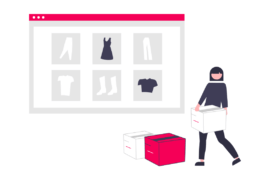Run of network campaigns allows advertisers to place their ads on the list of websites available on a specific ad network. Meaning that the ads can appear on any website partnered with the network. However, advertisers are not free to choose the inventory or site on the network.
Run of network makes it hard for advertisers to target audience. However, it can be a good campaign idea for buyers looking to generate brand awareness and reach out to a varied set of audience.
What Does RON Mean for Publishers?
Google Ad Manager allows publishers to put their inventory for run of network targeting. Also, the default settings of GAM is run of network. If we talk about the pros for publishers, it’s easy to set up RON line items and hence less time-consuming. Next, it can provide a better fill rate to publishers looking to monetize the unsold inventories.

Coming to cons, run of network targeting is cheap on the advertiser’s side. Hence, publishers should also expect low earnings (pure economics of demand and supply). Also, it doesn’t provide much control to publishers. They can’t add frequency cap, creative rotation feature in unavailable, and can’t setup ad unit targeting.
Run of network ads can be helpful for new publishers to get started. But it is never recommended to put all of your ad units for RON. Try ad testing by segmenting your inventory and offering different targeting methods, one of which can include impressions going to RON.
Any Other Similar Ad Campaigns
Apart from RON, publishers can also go for run of site (ROS) and run of channel (ROC) campaigns on their sites.
Run of site allows advertisers to place creatives on a specific site (including all of its page and ad units). Advertisers trying to target a niche audience on a specific site (contextual targeting) go for run of site.
For example, suppose you own a blogging site discussing travel facts and stories. Then chances are you will be approached by travel agencies asking you to place their ad creatives on your site. In such a case, you can offer run of site targeting. As you are providing a niche and relevant audience to agencies, chances are you can make a good profit with this deal.
Next, run of channel or ROC. This gives advertisers access to put ads on multiple channels defined by a specific publisher.
For instance, a publisher has an email newsletter, then advertiser running run of channel campaign can place creatives inside emails. And the users receiving the email newsletter will see these ads by advertisers.
Bottom Line
Even with its pros and cons, run of network is still chosen by many publishers due to its ease of use and good fill rate. However, if you, a publisher, are equipped with a good ad ops team to manage different targeting scenarios, then feel free to experiment and offer other options to advertisers. Also, run of network is not necessarily a non-profitable deal. It can be used effectively by smart implementation (like using it to sell unfilled impressions).

Shubham is a digital marketer with rich experience working in the advertisement technology industry. He has vast experience in the programmatic industry, driving business strategy and scaling functions including but not limited to growth and marketing, Operations, process optimization, and Sales.






